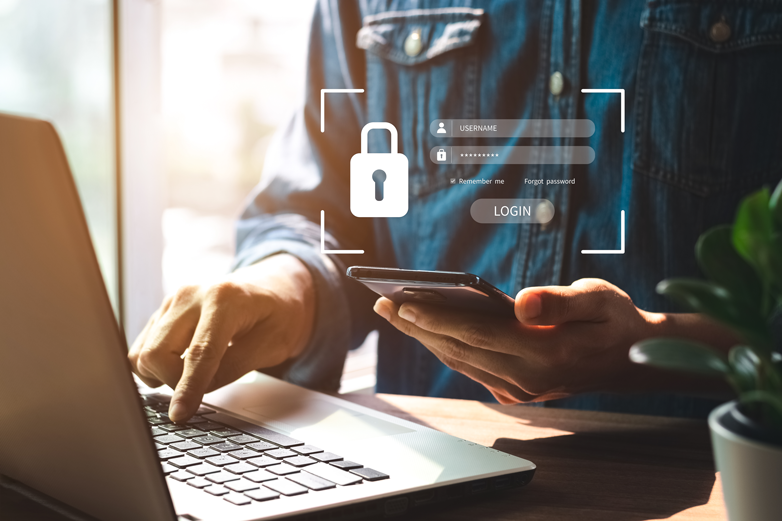If you use the same password(s) for all of your logins, it may be time to reconsider how you protect your digital information and ensure you know the best way to manage your passwords effectively. Passwords are the literal key to doing basically anything online. That is why many people use the same password with different variations, but is capitalization or adding an extra character really going to protect your accounts?
There are many different ways to protect yourself online without memorizing a new unhackable password for every account. So if you are someone who uses the same password for everything and want to learn how to manage passwords for better security, we have got you covered!

What Makes A Good Password?
Before we get into tips and tricks for staying safe online, let’s take a look at what makes a strong and secure password. As you know, passwords are used for everything from social media accounts to online banking and bill pay. Because so many of the things we do require passwords, choosing the same one for every account seems like the most convenient way to do things, but it is also the most common reason why accounts are hacked. If your information was involved in a company-wide data breach, hackers could steal your personal information and passwords to sign in to other accounts, and unfortunately, this method works. If your data is compromised, it can lead to more serious issues such as identity theft.
When it comes to stronger passwords, longer is better. But it isn’t just length that’s important when it comes to choosing a password; using random words as a passphrase may add additional security to your accounts, according to the Electronic Frontier Foundation.
Unfortunately, as technology advances, so do hacker capabilities. That is why it’s important to understand that even “good” passwords are at risk, which is why it’s essential to take other security precautions.
How To Protect and Manage Your Passwords and Personal Information
- Enable Extra Layers of Security
There are many layers when it comes to protecting your data online. In addition to creating a strong password, there are additional security measures that can help protect your information.For example, most platforms that require you to log in will offer users the option to enable or disable two-factor authentication (2FA). Two-factor authentication is a specific and common type of multi-factor authentication (MFA) that offers an additional layer of protection by creating an extra step in your sign-in process. Although there are many ways to go about enabling a 2FA, the most common is through the use of a mobile number. - Don’t Rely on Security Questions
Some websites will have users answer a set of security questions, but even this added layer of protection may not be as effective as you might think. Most of the questions are pretty basic and if someone close to you is trying to log in to your accounts, they might easily be able to answer these questions correctly. To better protect your information, It is recommended that users treat the answers to these questions as passwords by making the answers a long-phrase rather than a simple answer. - Don’t Recycle Passwords
We already covered this one, but it’s important to not use the same passcode for every account that you have, especially shared accounts. - Use a Password Manager (Built-in)
Password managers have changed the way people secure their personal information online. An added bonus is that most browsers or online storage services will save your information across all of your devices. - Use Password Protection Management Software (recommended)
Although the password management services included with Windows, iCloud, and Chrome can help you manage passwords while you are using each program respectively, but if you want to simplify the password management process across all of your digital devices, consider password protection software, such as ByePass from iolo.In addition to managing your password, ByePass’s encryption Software also safeguards your credit card information across all browsers on all of your digital devices.








